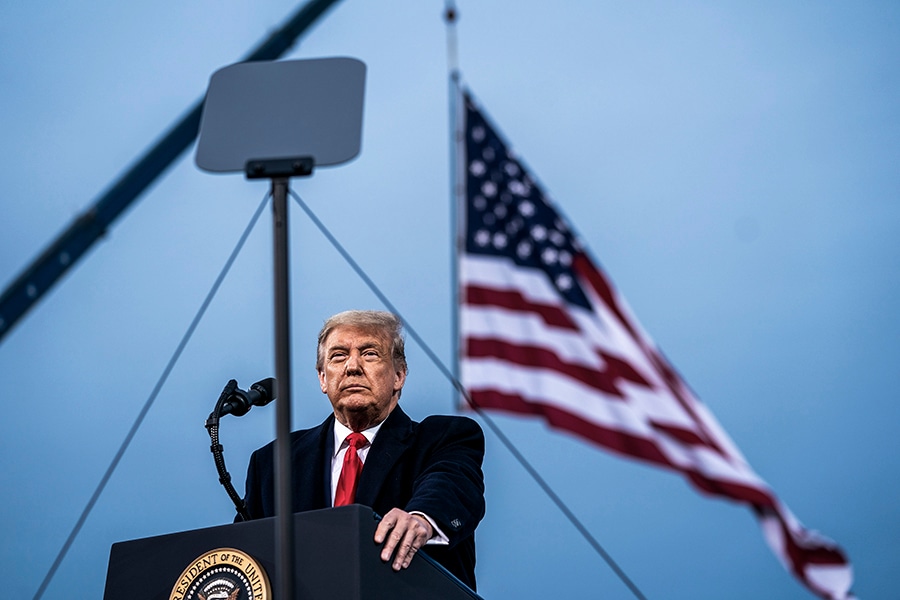
TikTok deal exposes a security gap, and a missing China strategy
Technological progress has outpaced the political debate again. What will happen when the next TikTok arrives in the United States?
 President Donald Trump holds a fly-in campaign rally at the Fayetteville Regional Airport in North Carolina, Sept. 19, 2020. In a deal announced on Saturday, which was spurred by Trump’s national security concerns over TikTok, the social media app said it would separate itself from its Chinese parent company, ByteDance, and become an independent entity called TikTok Global. (Doug Mills/The New York Times)
President Donald Trump holds a fly-in campaign rally at the Fayetteville Regional Airport in North Carolina, Sept. 19, 2020. In a deal announced on Saturday, which was spurred by Trump’s national security concerns over TikTok, the social media app said it would separate itself from its Chinese parent company, ByteDance, and become an independent entity called TikTok Global. (Doug Mills/The New York Times)
WASHINGTON — President Donald Trump has declared victory in his latest confrontation with China, saying that he headed off a looming national security threat by forcing the sale of the social media app sensation TikTok to a consortium of American, European and — although he does not say so — Chinese owners.
But it is far from clear from the details released so far that Trump’s deal resolves the deeper TikTok security problem — which has less to do with who owns the company and more with who writes the code and algorithms. The code and algorithms are the magic sauce that Beijing now says, citing its own national security concerns, may not be exported to a foreign adversary.
And the deal certainly doesn’t resolve the broader problem in the expanding technology wars between Washington and Beijing: how the U.S. government should deal with the foreign apps that are now, for the first time, becoming deeply embedded on the screens of Americans’ smartphones, and thus in the daily fabric of American digital life.
TikTok illuminated the scope of the new competition. The United States wants to have it all. It seeks to reap the benefits of a global internet yet limit its citizens to made-in-America products, ensuring that the data that flows through American networks is “clean.” In fact, the Department of State has begun what it calls “the clean network initiative,” making sure that data is not tainted by adversaries, starting with China.
“This is a really hard problem and bashing TikTok is not a China strategy,” Amy Zegart, a senior fellow at the Hoover Institution and Stanford’s Freeman-Spogli Institute. “China has a multiprong strategy to win the tech race,” she said. “It invests in American technology, steals intellectual property and now develops its own technology that is coming into the U.S.,” as TikTok did with remarkable success in just two years.
©2019 New York Times News Service




